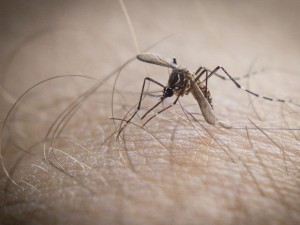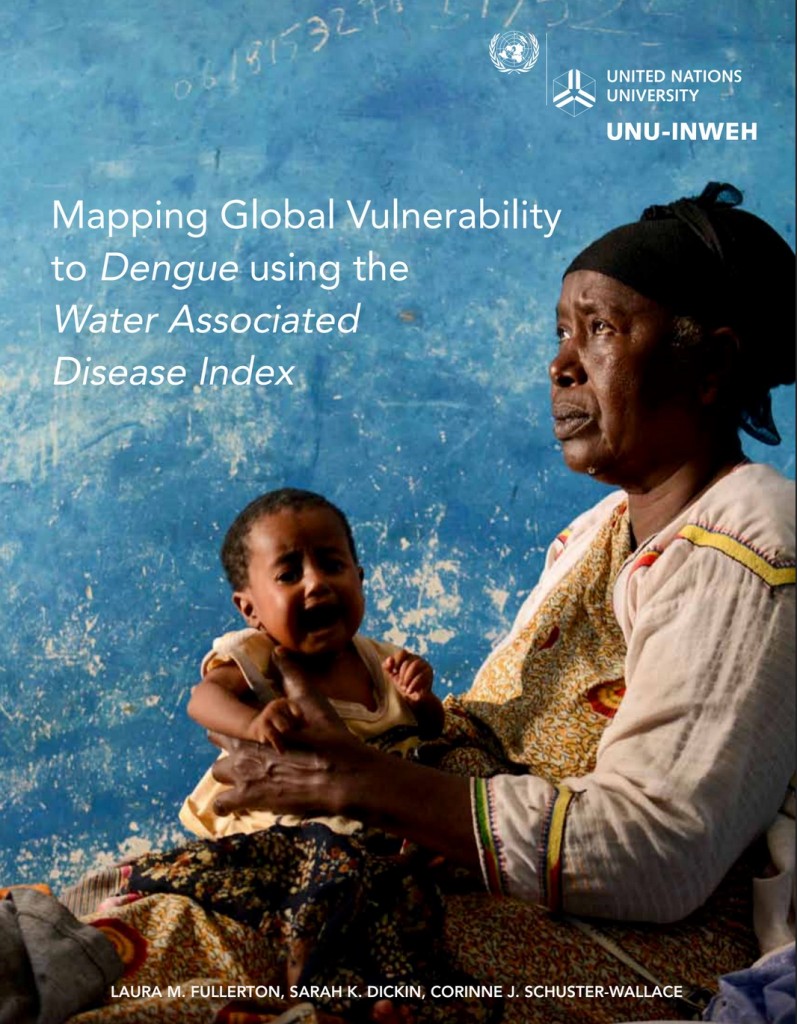UN University INWEH (Institute for Water, Environment & Health ), Hamilton CANADA
23-DEC-2014
Large Parts Of Europe, South America Face Rising Vulnerability
 The first-ever maps of global vulnerability to dengue, a mosquito-borne tropical virus that produces a painful condition of body joints sometimes referred to as “breakbone fever,” were published today by UN University’s Canadian-based Institute for Water, Environment and Health.
The first-ever maps of global vulnerability to dengue, a mosquito-borne tropical virus that produces a painful condition of body joints sometimes referred to as “breakbone fever,” were published today by UN University’s Canadian-based Institute for Water, Environment and Health.
The maps colourfully illustrate the dynamic expansion and contraction of dengue vulnerability worldwide through the year, revealing hotspots in January, April, July and October (available online for download: http://bit.ly/1wCq0mi). While not all vulnerable regions identified currently experience endemic dengue, these maps demonstrate where the virus could become a danger.
The work illustrates the consistent exposure to the virus in equatorial regions with greater seasonal trends in sub-tropical latitudes.
As the planet warms, according to the paper, conditions in West and Central Africa are particularly favourable for expansion of dengue illness and both regions are urged to plan for this anticipated health challenge.
As well, people living in large parts of Europe and mountainous regions of South America – too cold today to sustain mosquito populations year-round – face a “serious threat” of potential dengue virus exposure, the paper warns.
Vulnerability is a function of both exposure and susceptibility, the latter determined by such factors as access to healthcare, to clean water, housing quality, dengue control measures and government policies.
In typical northern conditions, eggs of the dengue-carrying Aedes mosquitoes die below -2°C. Should minimum temperatures rise 2°C and 4°C due to climate change, however, the eggs could survive, putting large populations worldwide at risk of exposure for the first time, the paper says.
While the paper notes that a rise in temperatures could make the environment too hot for mosquito populations in some places and shrink exposure to dengue, in general the authors expect the dengue virus to expand both north and south of its current range due to climate change.
Led by Senior Research Fellow Dr. Corinne J. Schuster-Wallace, the UNU-INWEH’s team of authors included Laura M. Fullerton, now a Research Associate, University Health Network, Toronto, and Sarah K. Dicken, a McMaster University and Water Without Borders PhD candidate.
The paper says dengue is endemic in more than 100 countries and the world’s fastest growing vector-borne disease.
Close to 400 million people today are infected by the virus, causing 250,000- 500,000 severe cases annually leading to hundreds of thousands of hospitalizations, approximately 20,000 deaths and enormous economic impacts due to lost productivity and healthcare costs. In Southeast Asia, dengue creates annual direct healthcare costs estimated at US $950 million.
UN estimates of the number of people at risk today: 2.5 billion people, rising to 5 or 6 billion people by 2085 (assuming climate change and population growth). The increase due to climate change alone would more than double the number at those at risk to an estimated 3.5 billion.
The Top 10 Dengue Endemic Countries:
- Brazil
- Indonesia
- Vietnam
- Mexico
- Venezuela
- Thailand
- Philippines
- Colombia
- Malaysia
- Honduras
Between 2004 and 2010, Brazil reported by far the largest number of dengue cases – about 450,000. Overall, however, the people of South Asia and Southeast Asia are deemed to have highest levels of vulnerability to dengue (for a map comparing global exposure to dengue in January and July, download at http://bit.ly/1IYEJgz).
Countries located close the equator tend to maintain some level of vulnerability to dengue throughout the year because they experience moderate to high susceptibility and consistently favourable exposure conditions (e.g., Colombia, Sierra Leone, Nigeria, Southern India, Indonesia).
The disease is often misdiagnosed. In addition to fever, symptoms include headache, muscle and joint pains, and a measles-like rash. A small share of cases develop into life-threatening dengue hemorrhagic fever, resulting in bleeding, low levels of blood platelets and blood plasma leakage, or dengue shock syndrome, characterized by dangerously low blood pressure.
Since there is no vaccine, the usual approach to curbing dengue is insecticidal fogging of sites where the Aedes mosquito breed.
Mapping Global Vulnerability: Background
The paper, “Mapping Global Vulnerability to Dengue,” assesses several factors – including social, cultural and economic conditions – that determine the exposure and susceptibility of people to the disease to arrive at the global vulnerability maps.
Developed by UNU-INWEH, the Water-Associated Disease Index (WADI) used in the research incorporates and aggregates such factors behind the disease as climatic conditions, land cover, population educational status and water use practices. WADI helps visualize the vulnerability of communities and regions to infectious water-related diseases in the face of global changes such as increasing urbanization, land use intensification and climate change.
Says Dr. Schuster-Wallace: “WADI was developed to assess vulnerability by integrating disease-specific measures of environmental exposure (i.e., temperature, precipitation, land cover etc.) with disease-specific measures of social susceptibility (i.e., life expectancy, educational attainment, access to healthcare etc.) to provide a holistic picture of vulnerability to disease.”
Employing freely available global datasets, the global vulnerability data created using the WADI approach provides valuable information to decision-makers for improved planning and resource allocation for the prevention of disease (the same approach can be applied to many other illnesses).
High population density increases exposure by providing human virus reservoirs that allow rapid dengue transmission. For instance, in Asian countries where population density is high, such as India, Bangladesh, China, and Indonesia, vulnerability to dengue is also high. Similar trends are observed in Central America and Western Africa where regions with high population density also have a high vulnerability to dengue.
In Central and West African regions, susceptibility to dengue is very high due to the lack of access to clean water resources, sanitation facilities and health care services. With very high susceptibility to dengue, vulnerability in this region was higher than other regions with similar exposure levels but lower levels of susceptibility to dengue.
Download The Report: Click here
Example coverage by
Reuters, UK, Risk of dengue increases due to climate change, city growth: research, click here; Spanish: Riesgo de dengue aumenta por cambio climático y urbanización, click here; Portuguese: Risco de dengue cresce por mudança climática e urbanização, diz estudo, click here
Agencia EFE, Spain, Spanish: Investigadores de la ONU crean un mapa global de la vulnerabilidad al dengue, click here; English: UN Researchers Say Dengue Fever Could Spread to Europe click here,
Salon, USA, Dengue’s deadly future: How climate change will put billions more at risk, click here
The Star, Malaysia, Climate change raises dengue risk, click here
Ekonomicheskie Izvestija, Ukraine, Russian, Европе угрожает лихорадка Денге, — ООН, click here
News release in full, click here
Coverage summary, click here
